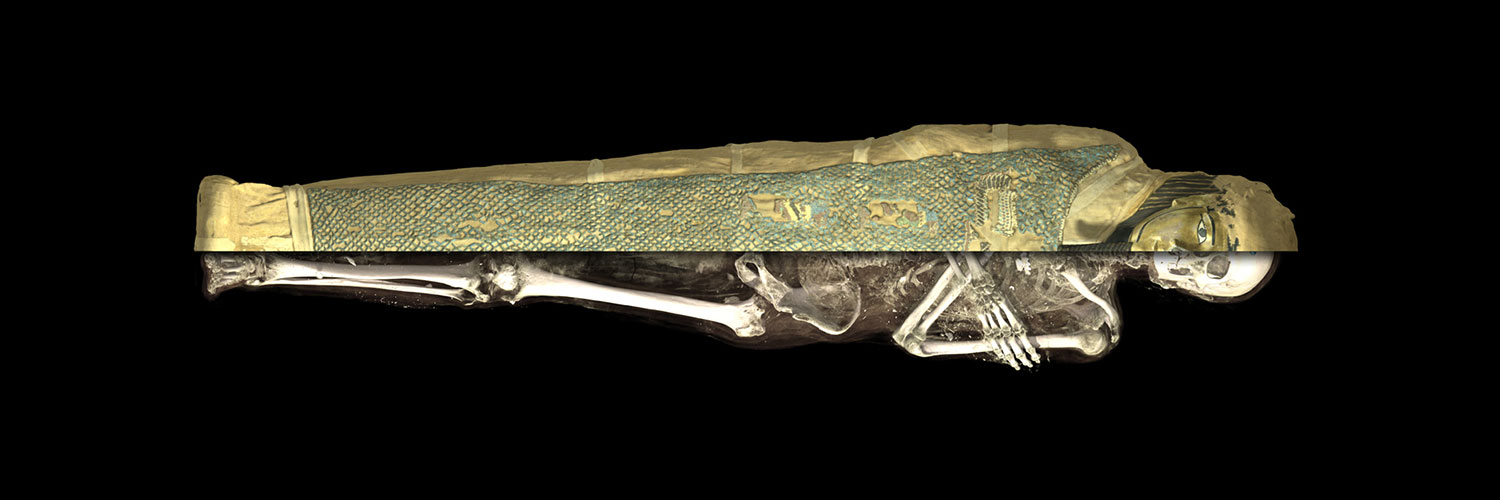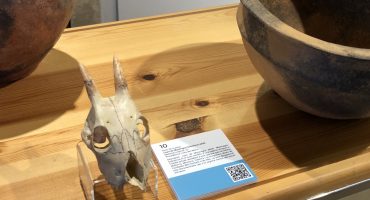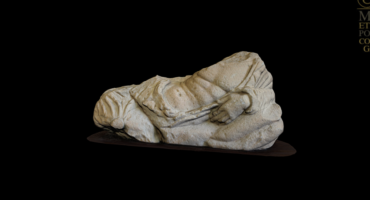About
My name is Benjamin Moreno, CEO and founder of IMA Solutions, a French based company which provides to museums, cultural institutions and archeology laboratories new tools to study and explore their collections or discoveries.
These tools include medical and biology imaging (Computed Tomography X-ray Scanning, Magnetic Resonance Imagery, micro computed tomography, microscopy…), 3D scanners usually used in metrology, high performance computing, 3D printing, 3D machining, 3D realtime rendering engines and softwares. In this way, IMA Solutions can handle complete projects from 3D data acquisition to delivery of end user experiences and applications. IMA Solutions works for prestigious clients worldwide including The British Museum, Le Louvre Lens, Natural History Museums, Musée Départemental Arles Antique, Discovery Channel, the CNRS, INRAP,… This year, IMA Solutions celebrates its 10 year anniversary.
During my studies in Biology at the University of Toulouse, I had to work on projects to 3D reconstruct models from data acquired from confocal microscopy or microCT (micro computed tomography) equipment. These equipments generate 2D thin high definition sliced images of the sample. These slices can then be stacked together to create 3d volumetric views of the object using volume rendering softwares.
But from an early age, I was always interested in computing and 3D rendering. I mainly learned 3D techniques and gained know-how by myself and I still continue to learn everyday as 3D technology is changing rapidly! So, I am a self made 3D guy!
Early Work
I started in 2007 with a project for The British Museum and for the Musée des Beaux-Arts et d’Archéologie de Besançon to perform X-ray medical CT scanner acquisitions, 3D renderings and 3D animations to explore several ancient Egyptian mummies from their collections. These first projects pertained to two exhibitions. For The British Museum it was an international touring exhibition, Mummy, the Inside Story, with a 20 minute 4K stereoscopic movie on display at the entrance of the exhibition within a 300 seat auditorium. And for the Museum in Besançon, there were several displays showing in 3D the inside of the two mummies of their collection for the exhibition Secrets of the Mummies.
Since then, we have worked with prestigious heritage institutions, TV channels and laboratories worldwide to 3D scan artworks, fossils, heritage sites and collections and create new interactive experiences for visitors.
https://skfb.ly/6xTEO
Why 3D?
3D scanning, CT scanning and Digital Media is the DNA of the company. Bringing high technology to explore and analyze collections to create immersive and pedagogic experiences for the audience in exhibitions is our day job. See here a video about the exhibition Ancient Lives, New Discoveries from The British Museum on how we 3D scanned ancient Egyptian mummies.
We usually create 3D content for two purposes when we work with Museums. The first purpose is science: we want to explore and better understand artwork or ancient remains to get scientific data that can be used for research, restoration and conservation. The second purpose is to enhance visitors’ experience. For example, for the British Museum’s exhibition Ancient Lives – New Discoveries, visitors can visualize the inside of ancient Egyptian mummies like crime scene investigation experts to better understand how these people from the past lived and died.
Tools and Workflow
In house, we have short and long range 3D scanners from Artec3d and Faro that can capture objects from 1mm in size to hundreds of meters. These are the 3D capture tools for 3D surface scanning.
 Artec3d Spider 3d scanner in action at Natural History Museum of Toulouse. See the result on Sketchfab
Artec3d Spider 3d scanner in action at Natural History Museum of Toulouse. See the result on SketchfabBut we can capture and process data from a wide variety of systems like medical CT scanners, MRI, microCT, Synchrotron, confocal microscopy,… These systems allow us to perform volumetric acquisitions so that we can explore the insides of objects. For these capture methods, we typically work with facilities near to the museums in order to reduce the distance that the artworks have to travel.
 An Egyptian child mummy from The British Museum undergoes a X-ray CT scanner exam at the Brompton Hospital in London, UK.
An Egyptian child mummy from The British Museum undergoes a X-ray CT scanner exam at the Brompton Hospital in London, UK.Once we have captured the 3D data, sometimes from various sources, we process them on our high performance workstations and softwares to create 3D models that can be 3D printed, render 3D animations and create 3D interactive applications.
We also have a complete 3D digital sculpting solution for digital restoration using haptic force feedback arms.
Based on the Geomagic Freeform software and Phantom Omni haptic device, this virtual clay sculpting solution allows us to digitally restore damaged artworks and create new physical models in mint conditions using 3D machining and 3D printing.
https://skfb.ly/6BzAs
All of our systems from data acquisition to data processing adhere to high quality standards like VDI/VDE (standards used in metrology) to ensure data quality and precision. We always know the margin of error, which is really important to us when customers want to perform research with their 3D data.
We also provide to Museums digital preservation of their 3D models by making a secured backup on our servers. We offer on-demand data access to the museums that we work with at no cost, a practice which is a central part of our deontology and philosophy.
https://skfb.ly/EHTu
Challenges
Each project can be a challenge. Projects we work on involve a lot of different 3D technologies and can be very different in terms of location (inside caves, inside museums collections, outside on heritage sites,…) and subject (from early hominid fossils to modern artworks and sculpture). Being well prepared to articulate these technologies is the key solution. So, to be successful, you need to always anticipate and conduct a good technological survey to select the right workflow.
Advice for Beginners
You can now find a wide variety of acquisition systems from basic photogrammetry to high end professional 3D scanners. My advice would be to start with photogrammetry because it is cheaper and you can understand the basics of 3D scanning and start working with 3D models. Then, if you want to go further, go for professional 3D scanners and 3D softwares.
Looking to the Future
In the future, 3D will be more and more integrated in heritage organizations for different purposes and reasons: survey, digital conservation and preservation, research, education, exhibition builds… I think that heritage organizations are starting to understand all the benefits they can get from 3D so that 3D may become a standard for their digital strategy development. 3D opens great perspectives to explore non accessible heritage sites using VR, for example, or to showcase 3D models of artworks too fragile to be exhibited. 3D is a fantastic opportunity to make our common heritage accessible and spread knowledge.
A Favorite Model on Sketchfab
https://skfb.ly/6svMA
I would go for the Bacchus housed at Musée Saint-Raymond in Toulouse for several reasons. First, I fell in love with this artwork at first sight. It is so delicate! Second, because you can download it under CC-BY-SA license. Musée Saint-Raymond is very open minded and share with the community all the 3D scans we perform on their collections. So that even contemporary artists like Miss Alice Martin from Scotland can use the Musée Saint-Raymond 3d models as a basis to create new artworks. I really like this idea!
Website / Facebook / Twitter / Instagram / LinkedIn







